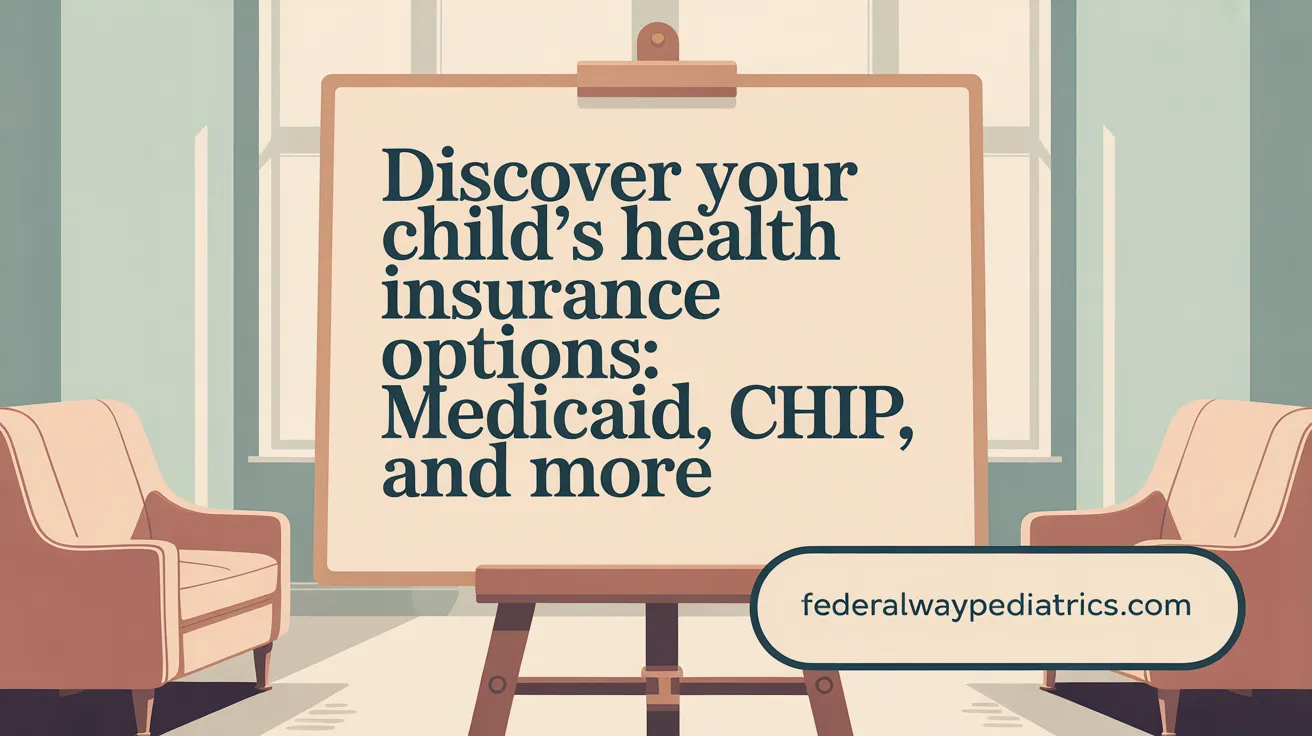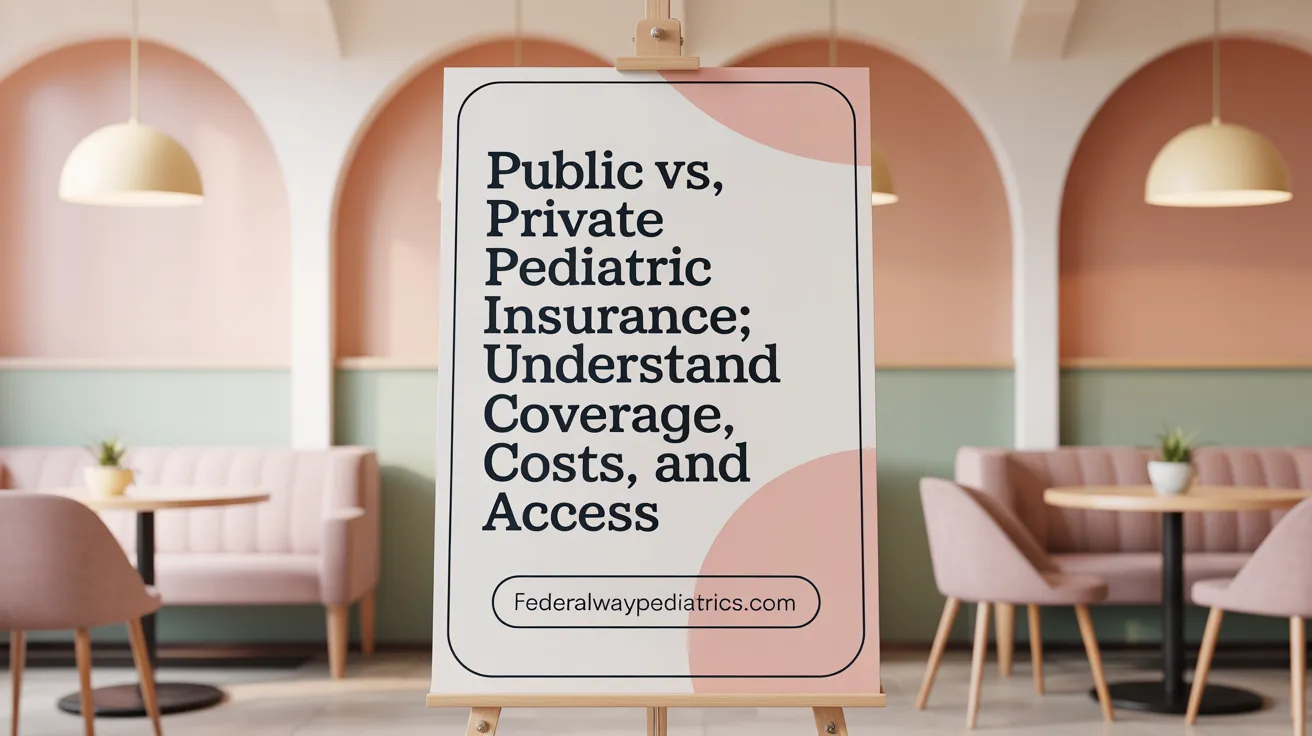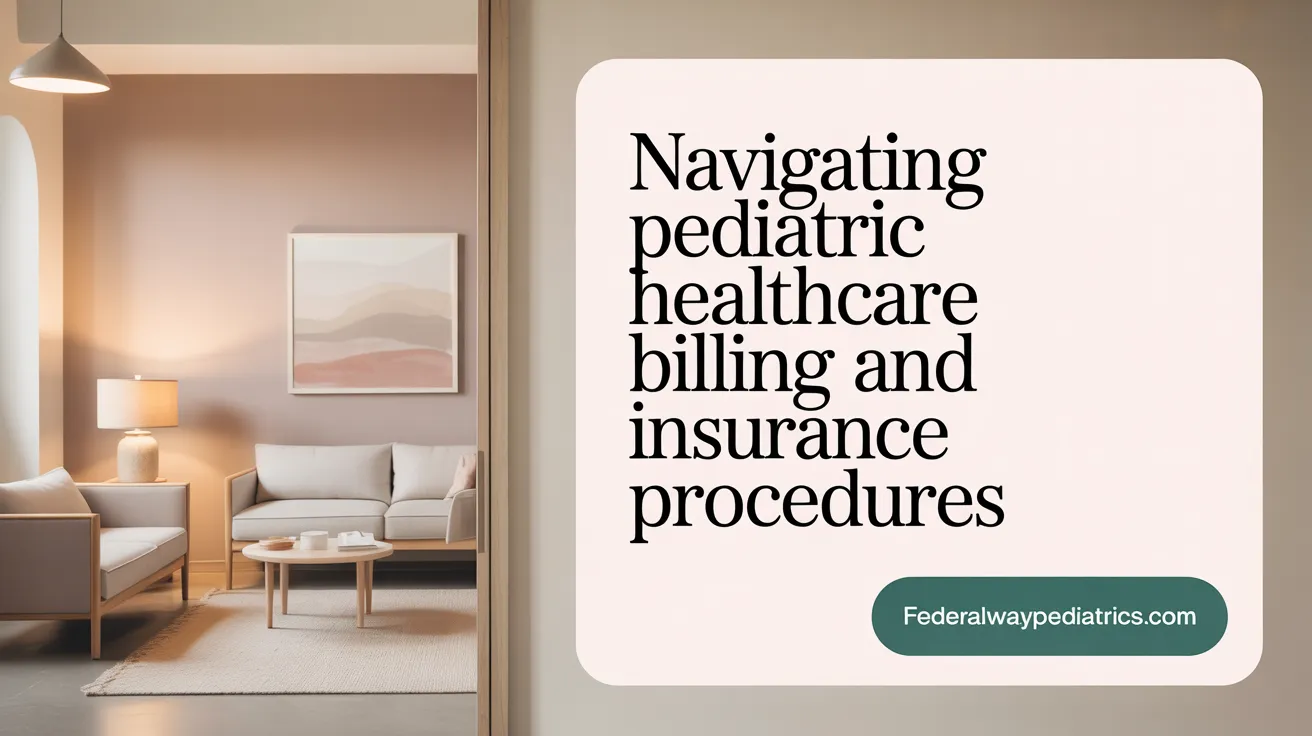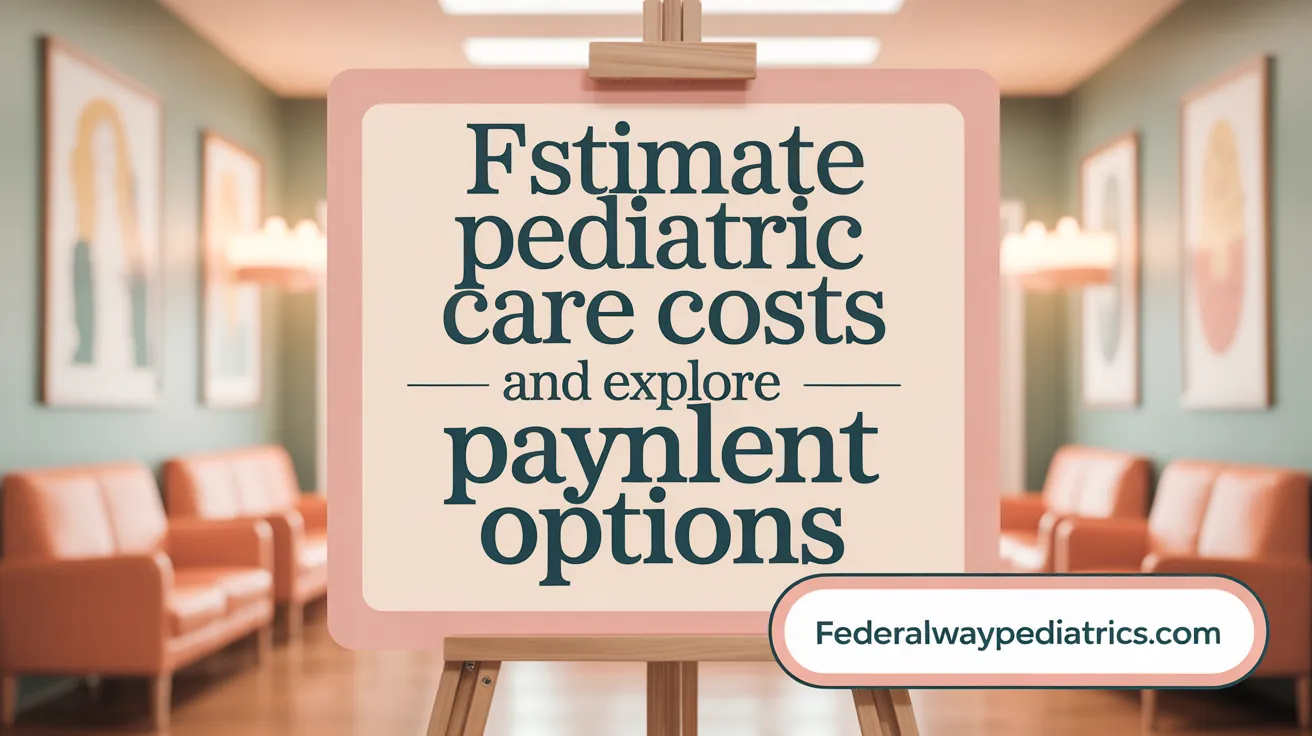The Challenge of Pediatric Healthcare Financing
Navigating the complex landscape of pediatric insurance and self-pay options is crucial for families seeking timely and affordable care for their children. With various insurance programs, coverage nuances, and payment methods, parents must be well-informed to make the best decisions regarding their child's health care needs. This article provides a comprehensive guide to pediatric insurance options, the differences between public and private coverage, typical costs for self-pay services, and practical strategies for managing billing and insurance procedures.
Exploring Pediatric Insurance Options: Medicaid, CHIP, and Beyond

What are the main pediatric insurance options available, including public programs such as Medicaid and CHIP?
The primary options for children's health insurance in the United States include public programs like Medicaid and the Children's Health Insurance Program (CHIP), tailored to serve children in low- to moderate-income families who might not afford private insurance.
Medicaid is a comprehensive health coverage program established in 1965, that provides services such as doctor visits, dental, vision, mental health, and developmental care for eligible children and families. Eligibility mostly depends on income levels and varies by state, with the federal government matching state funds at different rates.
CHIP introduced in 1997, bridges the gap for families earning too much for Medicaid but still needing financial assistance for healthcare. It covers check-ups, immunizations, dental, vision, hospital stays, and behavioral services, often at minimal or no out-of-pocket cost.
Both programs are managed jointly by federal and state agencies, allowing for flexible enrollment year-round and providing a pathway for continuous coverage.
Besides these public options, private insurance plans are available, typically through employers or the health insurance marketplace. These plans may offer broader coverage but usually come with higher costs.
How do programs like CHIP, Medicaid, and ACA protections work to provide pediatric health coverage?
Medicaid and CHIP are fundamental in delivering affordable and comprehensive healthcare to children, especially those from disadvantaged backgrounds.
Medicaid covers a wide range of pediatric services, emphasizing preventive, primary, dental, and mental health care. It is accessible to U.S. citizens and certain lawfully admitted immigrants, with eligibility thresholds based on income.
CHIP acts as a supplement to Medicaid by providing coverage for children whose families earn too much for Medicaid but still face financial barriers. It covers routine check-ups, immunizations, dental, and mental health services, with lower cost-sharing requirements.
Both programs are funded through a collaboration of federal and state government, which offers states flexibility to tailor benefits and manage enrollment. Outreach efforts and simplified application processes help families enroll and maintain coverage.
The Affordable Care Act (ACA) reinforces pediatric health coverage by ensuring protections like prohibiting denial due to pre-existing conditions, maintaining continuous Medicaid eligibility during public health emergencies, and expanding access through the online health insurance marketplaces. For more information, see Health Insurance for Children and Young Adults.
Together, these programs aim to safeguard children's health by ensuring access to necessary services regardless of income or pre-existing health issues.
| Program | Main Benefits | Funding Source | Eligibility Focus |
|---|---|---|---|
| Medicaid | Comprehensive care including dental and mental health | Federal & state collaboration | Low-income children & vulnerable groups |
| CHIP | Routine check-ups, immunizations, behavioral health, hospital care | Federal & state cooperation | Families earning too much for Medicaid |
| ACA Protections | Prohibits pre-existing condition denial, maintains eligibility | Federal government | All children, especially those at risk |
Public and private options, supported by protections under laws like the ACA, work together to help ensure that children across different income levels and health needs receive the essential medical care they deserve. For additional resources on navigating insurance and support for families, please refer to dedicated guides.
Comparing Coverage, Access, and Costs: Public Insurance vs. Private Insurance and Self-Pay
 Understanding the differences in pediatric healthcare coverage and costs can be complex, but some overarching trends help clarify the landscape.
Understanding the differences in pediatric healthcare coverage and costs can be complex, but some overarching trends help clarify the landscape.
Differences in costs between public and private insurance
Public insurance programs like Medicaid and CHIP are designed to be affordable, especially for low-income families. These programs typically have minimal or no premiums, and families’ cost-sharing is capped at around 5% of their income. Medicaid, in particular, is about 10% cheaper than private insurance for children, mainly because it has lower administrative costs and fewer premiums. In contrast, private insurance plans often carry higher premiums, deductibles, and copayments, which can significantly increase out-of-pocket expenses. For more on comparing public and private health insurance for children and understanding the cost of pediatric care, see these resources.
Access to pediatric specialty and mental health care by insurance type
Insurance status plays a critical role in access to specialized pediatric healthcare. Uninsured children face considerable barriers, including fewer referrals to specialists and longer wait times. Those with public insurance like Medicaid generally experience better access than uninsured peers, with increased specialist visits and fewer unmet health needs. Children enrolled in private insurance typically enjoy even broader access, including more specialty providers and mental health services. However, network limitations and plan restrictions can sometimes reduce access, especially under managed care models that act as gatekeepers.
For insights on effects of insurance on children's access to specialty care and insurance influence on specialty care referrals, as well as self-pay outpatient mental health care for children, consult these sources.
Self-pay costs and their impact on families
Self-pay, or paying out-of-pocket, can be burdensome. For example, median costs for outpatient mental health visits are around $110 per session, which can be prohibitive for low-income families. Those with higher incomes are more likely to pay for services without insurance, potentially discouraging necessary care due to financial concerns. Explore more about self-pay pediatric costs and financial burdens in pediatric mental health care.
Cost-sharing and out-of-pocket expenses
Public programs tend to limit out-of-pocket costs, making essential services accessible to low-income families. Conversely, private insurance plans often involve higher deductibles and copayments, leading to substantial costs for families, especially if coverage lapses or if services are not fully covered. Additional guidance on managing healthcare costs for children and payment options for pediatric care may be helpful.
| Aspect | Public Insurance | Private Insurance | Self-Pay (Out-of-Pocket) |
|---|---|---|---|
| Cost to Family | Generally low or none | Higher premiums and copays | Varies, median around $110 per visit |
| Access to Specialty Care | Better than uninsured, but some barriers | Broad, but network restrictions exist | Limited, often unaffordable for low-income families |
| Coverage Benefits | Comprehensive, including preventive and essential services | Broader benefits, but variable coverage | No coverage, full cost borne by family |
| Impact | Promotes access among low-income children | Cost barriers may limit utilization | Discourages care due to high costs |
In conclusion, insurance coverage significantly reduces out-of-pocket expenses and enhances access to pediatric health services. Public programs are especially effective for low-income families, offering affordable, comprehensive care. Private insurance can provide more benefits but often at a higher cost, which can limit access for some families. Self-pay remains a considerable barrier, especially in mental health services, underscoring the importance of continuous insurance coverage for pediatric survivors to ensure equitable pediatric healthcare access.
Understanding and Managing Pediatric Healthcare Billing and Insurance Procedures

How can parents navigate pediatric health insurance enrollment, coverage, and billing procedures?
Parents can effectively navigate pediatric health insurance enrollment, coverage, and billing procedures by first understanding their plan's eligibility requirements and coverage details, including specific codes for pediatric services, immunizations, and supplies (Insurance navigation tips, Navigating insurance coverage for pediatric medical supplies, Health insurance for children). They should promptly enroll newborns within the required timeframes, such as 30 days, to ensure continuous coverage (Adding a newborn to insurance, Continuous insurance coverage for pediatric survivors). Before appointments, verifying insurance coverage helps prevent claim rejections and billing errors (Insurance Verification, Confirming provider coverage after insurance change, Verify insurance coverage, Insurance coverage verification). While managing bills, parents should review Explanation of Benefits (EOB) statements carefully, confirming details match provided services and identifying any discrepancies (Explanation of Benefits (EOB), Billing & Insurance, Pediatric Health Care Associates billing and insurance). Respond promptly to insurance correspondence and work with healthcare providers to correct coding or documentation errors (Working with doctors for insurance approvals, Insurance claims process). Maintaining accurate contact details and insurance information is crucial for smooth processing (Updating insurance information, Contacting insurance company for child care). Paying co-pays at the time of service and understanding financial responsibilities like deductibles or co-insurance can reduce billing surprises (Co-pays and deductibles payment policy, Payment Methods, Understanding co-pay). Staying informed about policy coverage limits, utilizing available resources such as financial counselors, and communicating openly with insurers and providers help ensure ongoing coverage and minimize billing issues (Financial Policy, Financial assistance options, Contact Financial Advocates).
Estimating Costs and Payment Methods for Pediatric Care
 Understanding the expenses associated with pediatric healthcare is vital for families managing treatment costs. The typical self-pay cost for pediatric services varies substantially, influenced by the type of care, location, and provider. For example, the first-year pediatric care without insurance can total approximately $3,100, covering routine check-ups, immunizations, and tests. Specific procedures like immunizations without a well exam typically cost between $150 and $550, with additional charges for specialist visits (Pediatric doctor visit cost).
Understanding the expenses associated with pediatric healthcare is vital for families managing treatment costs. The typical self-pay cost for pediatric services varies substantially, influenced by the type of care, location, and provider. For example, the first-year pediatric care without insurance can total approximately $3,100, covering routine check-ups, immunizations, and tests. Specific procedures like immunizations without a well exam typically cost between $150 and $550, with additional charges for specialist visits (Pediatric doctor visit cost).
To assist families in planning financially, many hospitals offer tools to estimate potential costs. These include online cost estimator applications available through hospital portals such as MyChart, which generate personalized estimates based on insurance coverage and anticipated services. For instance, Children’s Health and Northwell Health provide online tools that produce detailed cost projections before treatment, helping families understand their financial responsibilities (Price transparency at Children's Health, Get an Estimate).
Hospitals are also mandated by federal regulations, such as the Price Transparency Rule (45 C.F.R. §180.50), to publish standard charge files for outpatient and inpatient services. While these lists offer insight into hospital charges, they do not reflect negotiated insurance rates or out-of-pocket expenses for insured patients. Therefore, contacting the hospital’s financial counseling department or insurance company remains crucial for obtaining accurate estimates (When Price Transparency Still Leaves Us in the Dark).
Payment methods accepted for pediatric care are diverse. Common options include cash, checks, and major credit cards like Visa, MasterCard, Discover, and American Express. Some hospitals also accept health savings accounts (HSAs) and flexible spending accounts (FSAs), which allow families to use pre-tax dollars for medical expenses. Many practices provide online portals, such as MyChart, where families can pay bills and monitor account balances conveniently (Payment Methods, Payment options at The Pediatric Eye Center, Children's Health Care Coverage Fact Sheets).
For those without insurance or with high deductibles, financial assistance programs and flexible payment plans can ease the burden. Hospitals often offer 'Good Faith Estimates' upon request, providing transparent cost projections before treatment. Additionally, financial counselors are available to help families explore discounts, payment plans, or qualify for assistance programs like Medicaid or charity care, ensuring access to necessary pediatric services without overwhelming financial hardship (Contacting insurance company for child care, Billing & Insurance, Payment options at EPIC Urgent & Family Care).
Practical Strategies for Families to Manage Pediatric Healthcare Costs and Insurance
 Managing healthcare costs for children can be challenging, but families can adopt effective strategies to navigate insurance policies and reduce expenses. First, organizing medical bills and records by categories such as hospital, doctor, diagnostic tests, and pharmacy helps families keep track of expenses and simplifies insurance filing. This organization ensures that all charges are accounted for and can be presented clearly when dealing with insurers.
Managing healthcare costs for children can be challenging, but families can adopt effective strategies to navigate insurance policies and reduce expenses. First, organizing medical bills and records by categories such as hospital, doctor, diagnostic tests, and pharmacy helps families keep track of expenses and simplifies insurance filing. This organization ensures that all charges are accounted for and can be presented clearly when dealing with insurers.
Understanding insurance terms and plan features is crucial. Parents should familiarize themselves with key concepts like copays, deductibles, co-insurance, and whether their providers are in-network. Knowing what services are covered — including preventive, dental, and mental health care — allows families to verify coverage before treatments, avoiding unexpected costs.
Proactively advocating for coverage and financial assistance is essential. Families are encouraged to contact their insurance companies early, especially if treatment approvals are needed, and to explore programs such as Medicaid, CHIP, or state-specific aid (Medi-Cal for Children). These programs can significantly lessen out-of-pocket expenses, particularly for low-income households. For survivors or children with special needs, ensuring continuous insurance coverage through parents’ plans until age 26, or exploring qualifying assistance like SSI or Medicaid for disabled children, can provide ongoing support.
Effective communication with healthcare providers and insurers fosters understanding and access. Families should request cost estimates prior to procedures, clarify what is covered, and inquire about payment plans or discounts for bills (financial policy examples). Sharing organized records and seeking advice from social workers or financial counselors can further ease the financial burden.
In summary, preparation, knowledge, persistent advocacy, and open dialogue are vital strategies that empower families to manage pediatric healthcare costs successfully. Staying informed and proactive helps ensure children receive necessary medical care without overwhelming financial stress.
Empowering Families Through Knowledge and Resources
Understanding the intertwined aspects of insurance coverage, self-pay costs, billing procedures, and payment options is essential for families managing pediatric healthcare. Public insurance programs like Medicaid and CHIP offer vital affordable coverage with comprehensive benefits, while private insurance provides additional options with varying costs and access. Self-pay services require careful cost estimation and planning, supported by available tools and resources. By organizing billing information, leveraging financial assistance, and maintaining clear communication with providers and insurers, parents can navigate the healthcare system more effectively. Ultimately, informed families are better equipped to secure timely, quality care for their children while managing financial responsibilities with confidence.
